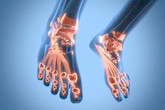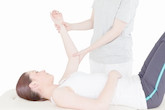Carpenter's Syndrome: causes, symptoms and treatment
Carpenter's Syndrome is a genetic birth defect syndrome that involves the toes, fingers, skull and sometimes even the heart. It is a form of acrocephalopolysyndactyly (ACPS) which is a group of genetic disorders that are rare and they include Apert syndrome.
Carpenter's Syndrome was named after the person who described it in the first place. There is no known way on how the Carpenter's Syndrome does occur and there are more than 100 cases that have been used to describe it worldwide according to medical literature. Thus it is estimated that Carpenter's Syndrome occurs in around 1 in one million births. The syndrome affects both male and females where it is inherited in a manner that is autosomal recessive. An individual has to receive some copies of the defective gene in order for him to develop the disorder. This comes from each of the parents.
Causes of Carpenter's Syndrome
The skull of a baby contains separate bones that are connected together by sutures instead of one fused bone like that of an adult. The satures give space for the skull to expand as the brain of the child grows. In case one of these sutures close in a premature manner, then the skull cannot grow as it is supposed to and this results in a condition known as craniosynostosis.
When craniosynostosis occurs, then Carpenter's Syndrome can result. According to research, the problem is from genes that are responsible in the production of proteins that regulate the growth of cells and also limits the growth of cells. The Alpert, Carpenter, Muenke, Crouzon, saethre-Chotzen and the Pfeiffer syndrome all fall in this category of craniosynostosis-related syndromes.
Although the exact cause of Carpenter's Syndrome is not known. Genetic mutations are the one that are thought to cause all the ACPS syndromes. The specific gene that is believed to cause Carpenter's Syndrome has not yet been known or identified.
In general, there appears to be no any connection between what a mother did or did not do in order to cause his or her child to have Carpenter's Syndrome. In case both parents suffer from this condition, the chance for their child to acquire Carpenter's Syndrome is 25%.
Unaffected children become carriers and they can pass Carpenter's Syndrome to their children in case the partner is a carrier of the particular gene, too.
Treatment of Carpenter's Syndrome
In order to develop the most effective treatment plan when a child is born with an issue of craniofacial, a study is carried out on how the underlying structures of the child are as well as the functions, in case they are affected. The study includes the CNS (central nervous system), cervical vertebrae, facial skeleton as well as the brain. For patients who have the facial skeleton being affected, the changes that are in the soft tissues are identified. These may include include the mouth, face and the top of the throat tissues. It is essential to determine how this condition is affecting the critical functions like breathing, speaking and swallowing before the treatment decision is made.
For Carpenter's Syndrome, when the abnormal growth patterns grows for years because they were already programmed in the body when the embryo was in the body, there is an anatomical evaluation in order to correct and repair the areas of concern. There are surgical procedures as well as reconstruction of natural windows.
Thus, the treatment of Carpenter's Syndrome depends on the symptoms that an individual has. In case there is a life threatening situation, then there is a reason for a surgery.
In case there are some bones of the head that are fused in an abnormal manner, then there is need for surgery to separate the bones in order to allow normal growth. In infancy, this is done in the early stages before the bones become strong enough making the surgery difficult. There can also be surgical separation of toes and fingers in case they are fused and may provide a solution to the appearance although they may not necessarily function better.
People who suffer from Carpenter's Syndrome may also benefit from occupational, physical and speech therapy. This helps an individual to reach his or her most expected developmental potential.
| Written by: | Michal Vilímovský (EN) |
|---|---|
| Education: | Physician |
| Published: | June 5, 2013 at 5:35 AM |
| Next scheduled update: | June 5, 2015 at 5:35 AM |
Related articles
Get more articles like this in your inbox
Sign up for our daily mail and get the best evidence based health, nutrition and beauty articles on the web.









Ache in left arm that you should not ignore
Alkaline water dangers: why you should not drink it
How to Avoid Sleepiness While Studying?
23 Foods That Increase Leptin Sensitivity
Low dopamine (e.g. dopamine deficiency): causes, symptoms, diagnosis and treatment options
Swollen taste buds: the ultimate guide to causes, symptoms and treatment
Thin endometrial lining: causes, symptoms, diagnosis and treatment
Pimples inside nose: the complete guide
Holes in tonsils: definition, symptoms, treatment and prevention
How to deal with an ingrown hair cyst
Allegra vs. Zyrtec vs. Claritin
Allergy to penicillin and alternative antibiotics
How to get rid of phlegm (excessive mucus) in throat? Detailed guide to medical and home remedies, symptoms and causes
What causes stomach ache after meals?
Liver blood test results explained